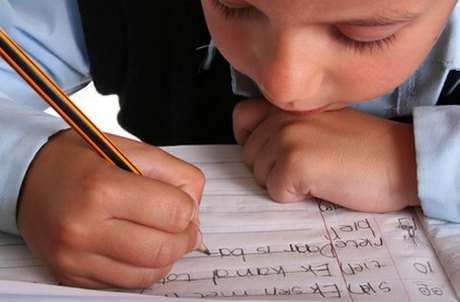Everything You Need To Know About A Dysgraphia Child
Parenting is a challenging full time job, especially with children having special needs or disorders. One such disorder is dysgraphia; it is a neurologically-based learning issue where a child is a reluctant writer and struggles with handwriting. This is a disorder that is more than the laziness and lack of motivation of the child, with parents of such children may wonder why writing is so hard for their child.
Dysgrapia and its symptoms:
It is quite possible for teachers, nanny, or parents to mistake this condition as reluctance, the child being unmotivated or lazy; but this is far from the truth. The child has trouble expressing his/her ideas and thoughts in writing.
Understanding dysgraphia in a child means knowing the important symptoms. The symptoms of this most challenging learning disorder would vary from child to child and also in the degree of intensity.
Here are some important symptoms of dysgraphia in children:
One of the most significant symptoms of dysgraphia is that the child finds the process of writing to be very difficult. He/she may find it very difficult to form letters, numbers and words. However these children may find it easy to express ideas verbally.
It is also found that children with this writing disorder may find it hard to spell properly and follow grammar rules. He/she may also have difficulty with comprehension, with difficulty in understanding and retaining what one learnt; this is due to their difficulty of intensely concentrating on the writing. It is also found that children with dysgraphia have problems organizing their ideas and thoughts into the written expression.
It is a pity that a child with dysgraphia who has issues with handwriting will have a tight or awkward pencil grip and may tire quickly while writing. The handwriting of such a child is illegible and inconsistent and it is common to see poorly formed letters, numbers, and words. This child may write slowly and has a tendency to even avoid writing entirely.

However it is significant to note that this child may enjoy typing on a computer; it helps to encourage him/her to develop strong keyboarding skills. Also a computer could help the child master spelling skills by the use of the spell check feature.
Children with this writing ability could also have spatial and orientation difficulties when writing letters and numbers. This can manifest itself in various ways in spacing and positioning of letters, words, and lines of written text, spacing and positioning of columns of numbers in math problems and maintenance of margins on a page of written text.
I will soon come up with ways to help a child with dysgraphia; the child needs to be dealt with patience by teachers, parents and caregivers. Set attainable goals and encourage the child on his achievements.
Image Courtesy: Google
Take the next step toward your goals
Share your requirement and find the best care providers in your area
-
Looking for a caretaker’s job? Build your profile and get in touch with families in your vicinity.
-
Discover nannies, babysitters, cooks, housekeepers, pet sitters, and elder care under one roof.
-
Get all the support you need to run a successful care center.
-
Search for appropriate centers near you depending on your needs.
Care Corner Insights: Blog Library

Best Child Care Hacks for Busy Indian Moms and Dads in the U.S.
Balancing work, home, and parenting is challenging, especially for Indian parents living in the U.S. Between cultural expectations, school schedules, extracurricular activities, and household responsibilities, managing daily life can often feel overw

A Revolutionary Guide for Indian Families in California
Living in California offers incredible opportunities, but Indian families often face unique challenges—balancing cultural values, adapting to a fast-paced lifestyle, handling child care, navigating school systems, and building a strong community away

8 Powerful Secrets to Raising Happy Kids While Working Full-Time in San Diego, CA
Balancing a demanding full-time job with raising happy, emotionally secure kids isn’t easy—especially in a vibrant, fast-paced city like San Diego. But with the right strategies, you can create a joyful, connected home environment without burning out

What’s the Best Way to Find a Trustworthy Indian Nanny in Fremont, CA ?
Hiring a nanny for your family is a big decision, especially when you want someone who understands your cultural values and parenting style. If you’re looking for a trustworthy Indian nanny in Fremont, CA, here are some effective strategies to make t

7 Proven Child Care Ideas That Make Parenting Easier for Indian Families in the U.S.
Raising children in the U.S. comes with a unique blend of opportunities and challenges—especially for Indian families trying to balance cultural values, busy work schedules, and daily childcare responsibilities. These seven proven childcare ideas can

9 Must-Know Tips for Hiring a Nanny in San Jose
Finding the right nanny for your family in San Jose can feel like a huge task — especially when you want someone who is trustworthy, experienced, and a perfect match for your child’s needs. Whether you’re a first-time parent or looking to replace you

10 Revolutionary Child Care Tips Every Indian Family in California Should Know in 2025
1. Bring India Home — Every Day Your children might grow up in California, but they can still grow with India. Let Indian traditions live inside your home — evening prayers, storytelling in your native language, or cooking regional dishes together.

Deep Cleaning Your House: Room-by-Room Checklist for a Thorough Clean
A sparkling clean home isn’t just about looks—it’s about health, comfort, and peace of mind. Whether you’re prepping for a festival, hosting guests, or just tired of the clutter, a deep clean can transform your space. But where do you start? Here’s a

What are Senior Apartments? Experts Explain Independent Living for Older Adults
As we age, our needs and lifestyles evolve—but one thing remains constant: the desire for independence. Senior apartments are designed precisely with this in mind, offering older adults a living arrangement that balances freedom with comfort, safety,

Baby Sleep Problems: What is Sleep Regression and How to Handle It
If you’re a parent, you know that baby sleep is one of the greatest mysteries of life. One day your little one is snoozing like an angel, and the next day they’re suddenly waking up every hour, fussing, or refusing to nap. Before you panic, there’s a